Research In Action
Speaker Blog
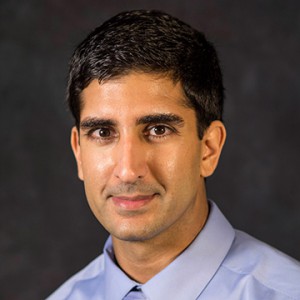
By Sameer Hinduja, Ph.D.
By way of introduction, I am a professor in the School of Criminology and Criminal Justice at Florida Atlantic University and co-director of the Cyberbullying Research Center. I appreciated the opportunity to speak on behalf of the Division of Research at the Boca Raton Public Library on how we can reduce cyberbullying. Here are the major tips I shared.
- Make sure your child feels safe. Take the time to learn exactly what happened, and the nuanced context in which it occurred.
- Don't freak out, but also don’t minimize the situation or make excuses for the aggressor.
- Collect evidence. Take screenshots of anything which can serve as clear proof that your child is being cyberbullied. Keep a record of any and all incidents to assist in the investigative process.
- Contact the social media company, site or gaming platform involved, and typically they will respond to your complaint in 24-48 hours. We've compiled an ever-growing list of contact information of these businesses here: cyberbullying.org/report
- Remind your child that they can control their online experience by blocking and reporting other users who have harassed or annoyed them. Also, they should not hesitate to unfollow or unfriend anyone who compromises the quality of their online experience.
- Try to cultivate resilience in your child when they deal with relational conflict that is minor in nature. Everyone has to deal with people who are rude and malicious and spiteful in adulthood, and so children must face and rise above mild incidents with the support and guidance of loving parents. This can provide you the opportunity to make sure that their self-worth isn’t solely rooted in peer perceptions but instead in who they are becoming as a person and what their future can look like.
I hope that these strategies help you to feel encouraged, empowered and equipped to be involved in your child’s online life, and come to their aid in meaningful ways should they ever experience cyberbullying. I know it’s easy to feel alone and out of your league – that was the sentiment shared by many attendees. This reminded me to always ensure that what I convey to parents is clearly actionable and rooted in “Parenting 101” strategies – where the goal is not to get overwhelmed by all of the different apps or devices out there, but simply to do your part to raise a kind human being. Here at FAU we will continue to lead the nation in our efforts to address cyberbullying through social, behavioral and computer science, and would love to connect with you to make greater progress. Reach out at any time – we are here to help.

By Oge Marques, Ph.D.
It was an honor and a privilege to speak about my research and share my passion for technologies that improve human lives with a group of highly interested members of our community at the Boca Raton Public Library last month.
As a longtime Boca Raton resident and Boca Raton Public Library patron for more than 20 years, I was particularly delighted to give this talk at this particular venue. I was also extremely pleased to see several colleagues from FAU, AAAS, Boca Raton Regional Hospital, and other organizations take time out of their busy schedules on a weekday to attend my talk.
The topic of human augmentation is very dear to me, since it is also the theme of this year's AAAS Leshner Institute Fellowship. As a Leshner Fellow I am committed to public engagement with scientists and am constantly looking for a diverse range of opportunities to engage in science communication with a broad variety of audiences.
My talk's take-home message -- "My research on AI and medical imaging at FAU is helping augment the radiologist’s perceptual and cognitive abilities and leading, ultimately, to better health care for all." – was clearly understood by the audience, as their questions, comments, and suggestions attest. The public was engaged throughout the entire talk and many attendees stayed around for another 30 minutes after the end of the talk, with intriguing questions and interesting observations.
I am thankful for the opportunity and look forward to continuing engaging with our community in topics related to science and technology and my work at FAU.
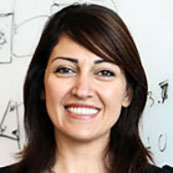
By Behnaz Ghoraani, Ph.D.
As a scientist whose research is about designing engineering solutions for medical applications, my passion is improving healthcare for patients with chronic diseases such as atrial fibrillation and Parkinson’s disease. I consider communicating scientific findings to the public one of my important responsibilities. The Research in Action series provided me with an opportunity to share my passion with my community.
I started my talk by describing my approach to solving clinical problems. I explained how we use sensors and artificial intelligence to model the behavior of the human body and then use the models to improve the diagnosis and treatment of a disease. A simple example is using a thermometer to record body temperature. Then, looking at this trend, we can develop models to tell us if the person has a fever.
In my research, we use different types of sensors. We use catheters that go inside the body to collect cardiac electrical activities or wearables that collect movement data of individuals with Parkinson’s disease. Our artificial intelligence models then translate the collected data into meaningful information about the condition that can help physicians to better treat the patient.
The audience was engaged throughout the talk. Some people even offered to be part of our clinical studies. We took a group picture with the attendees at the end of the talk.
Overall, I really enjoyed connecting with my community. It reminded me that what I call research in my day-to-day job, is actually “hope for a better quality of life” to many others.
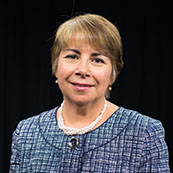
By Deborah D’Avolio, Ph.D.
It was a joy to speak to the community at the Research in Action series at the Boca Raton Library. It provided me with a unique opportunity to engage with the community to discuss the little-known geriatric syndrome, delirium.
My talk focused on what delirium is, what it looks like, symptoms, causes, prevention and treatment. We talked about how delirium is often not recognized and why older adults may be vulnerable because of ageism. I shared some of my personal and clinical experiences with delirium. We discussed what we still don’t know about delirium and why continued research in this area is critical.
Several of the attendees are caregivers for their loved ones. One audience member was a participant in one of my delirium studies. She shared her experiences with the audience.
It was wonderful to interact with an audience comprised of all ages from high school through older adults. Some of the participants shared their concerns and experiences with delirium. They were actively engaged and asked provocative and important questions. It was a rewarding to be able to take my research and translate it into actionable steps for the community.
At the end of our discussion, a high school boy approached me, shook my hand and said, “bless you for the research work that you do.” I will keep his heartfelt words in mind as I move forward with my research, teaching and advocacy.
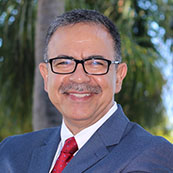
By Ata Sarajedini, Ph.D.
As I entered the room where my talk was to be presented, I saw several members of the audience whom I had seen at previous events where I had given talks. I was especially gratified to see Panos Giannakos, Arthur and Geri Lutzker, Jim Lifland, Edward Williams, John Martins, Stuart Cohen, Yvette Senser, Mike DeDonno, and Kari Oeltjen.
I began my talk by presenting a basic introduction of the scientific method in a similar way as I have done in every episode of the "Ask a Scientist" radio show / podcast series available from the FAU College of Science web site (http://www.science.fau.edu/scientist.php). Knowing what science is and how the methods of science work is critical to understanding and thinking critically about scientific results.
I spoke for 50 or so minutes about the formation and evolution of our galaxy – the Milky Way – beginning with how stars form and evolve and concluding with how our sun will end its life and in turn the Earth. There were a variety of questions from the audience with the most thought-provoking being about philosophy and not about science necessarily.
Astronomy frequently concerns itself with addressing questions related to the origins of things in the same way philosophy does. However, unlike philosophy, a hallmark of science is the presence of data (a.k.a. observations) and explanations (a.k.a. theories) that attempt to explain the data. I tried to make the point to the audience that science concerns itself with the natural world in which events tend to be repeatable while philosophy is sometimes applied to the supernatural world where events are not necessarily repeatable. It's hard to do science on events that are not repeatable.
I very much enjoyed my interactions with the audience during the question and answer period so much so that I did not want to put an end to it. Until next time ...
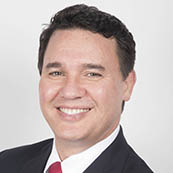
By Rhys L. Williams, JD, MBA
What an absolute privilege and honor to be asked to speak on the topic of entrepreneurship to a highly engaged, inquisitive and serious-minded group of attendees. Given the audience’s high degree of receptiveness, we covered a lot of ground, including:
-
Why the question of entrepreneurship, and who is best-suited or positioned for success, is relevant presently?
-
When we use the term entrepreneur, what exactly do we mean, and what are variations on the generally understood definition?
-
What are the categories of risk that entrepreneurs need to explore, quantify/qualify (wherever possible) and attempt to mitigate (always)?
-
What are archetypes, understood profiles and various classes of entrepreneurs?
-
How hard is it for entrepreneurs to succeed in launching and growing their ventures; what is the percentage of failure/success; what are the most common reasons for new business failure?
-
What qualities do successful entrepreneurs possess? Are successful entrepreneurs born, or can they be developed/trained?
-
Is it ever too old to become a successful entrepreneur? Are there prominent examples of entrepreneurial success that was earned late in a person’s life?
-
How can a member of the regional community engage with FAU, its team and its programs in the field of entrepreneurship?
If this list of topics we covered has piqued your curiosity, I encourage you to click here to view the full deck of presentation slides.
We had ample time for questions and answers, which afforded us the opportunity to explore several other topics, including:
-
Business model: Despite the common adage that “services don’t scale,” would a platform technology that allows business customers to deliver an entire program of services to their own clients potentially be scalable?
-
Intellectual property: What are the general rules governing ownership of intellectual property for FAU’s various internal stakeholders and outside partners?
-
If a person feels that they have good entrepreneurial instincts, exceptional work ethic and a strong competitive drive, but has not yet found the right idea, concept or unmet need in the marketplace around which to launch a business venture, are there resources at FAU to help them find a raw technology or a worthwhile business concept to start?
-
For someone who is interested in taking that first step on the path to becoming an entrepreneur, what resources are available through FAU?
If you are interested in learning the answers we covered during the final portion of the presentation, I invite you to reach out to me at
WilliamsR@fau.edu.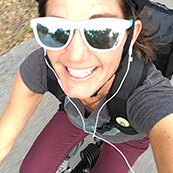
By Stacey Balkan, Ph.D.
As an advocate for alternative energy, and a professor of environmental humanities, little is more important to me than knowing that what I do in the classroom matters beyond the campus. This is especially true here in South Florida where I am reminded daily of the potential impacts of climate change, and the urgent need to engage the community in thinking about ways to alter our behavior. The Research in Action series at the Boca Raton Public Library gave me the opportunity to do just this!
My talk, titled “The Stories We Tell About Climate Change and Energy,” focused on the ways in which popular representations of energy and climate change shape public perception. I began by asking how visions of environmental apocalypse, for example, like we see in the film The Day After Tomorrow , skew our sense of our collective future. We then considered images of disaster that were both more scientifically feasible and a lot closer to home, such as hurricanes like Michael (2018) and Irma (2017). Audience members were eager to discuss the relationship — if there is one — between increased cyclonic activity, global warming and energy use. (Short answer: there is!)
Our discussion moved between the local and the global as we explored images of energy beyond the gas tank. We looked at examples of petroculture, including a poem by Nigerian writer and activist Ken Saro-Wiwa, titled “Ogoni! Ogoni!” This haunting work recounts the destructive role of petroleum extraction in the Niger Delta. Audience members recoiled at lyrics like “luckless lungs,” which referred to children; and one quickly said she would post this poem on her refrigerator as a daily reminder of the “hidden costs” of automobile culture. Her promise reminded me of the critical role of community engagement, especially in the context of environmental justice.
We ultimately turned to the history of energy use and its relationship to global development, and I asked: When did the so-called Anthropocene (or “age of Man”) begin? And, why does that matter? We quickly agreed on 1492 (the “age of discovery”) rather than 1784 (James Watt’s steam engine patent and the “industrial revolution”), because it is clear that current crises stem as much from dominant worldviews as from fossil fuels.
The day ended with a rich discussion about how we might imagine different ways of inhabiting the planet. At this point, one audience member asked: “How can you still be so optimistic?” I answered: “I’m a teacher, I have to be.”
back to top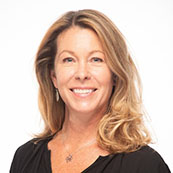
By Rindy Anderson, Ph.D.
I love sharing my research with the public. It is one of the most rewarding aspects of my job, mostly because of the questions from the audience. I am almost always asked a question that stumps me, and a question that I have never thought about before. My talk at the Research in Action lecture series at the Boca Raton Public Library, was no exception.
My talk focused on the fascinating ways animals communicate information with each other, and why animals are usually honest. During the lecture I spoke about the differences between animal communication and human language. I explained that scientists regard human language as truly unique and described the features of language that set our system of vocal communication apart from other animals.
One audience member asked: You said that human language is special because language can communicate information in ways that other animals can’t. But, how do you know that they can’t? We are biased by our own communication system. How can we ever really know what animals are communicating to each other if we don’t speak their language?
Wow, what a question. I struggled a bit. I explained that scientific study is so valuable because it allows us to test ideas about how the world works. We know what we know due to careful observation, hypothesis testing and synthesis of available knowledge. We know about the differences between human language and animal communication due to decades of research by dedicated scientists. By the end of my answer, however, I had to concede that I couldn’t know for sure that no other animal on Earth has language.
And, this raised an issue that is critical to the scientific process but is often difficult to explain. Through the process of scientific study, we gain new information and update our thinking about what we know. But perhaps, more importantly, science allows us to update our thinking about what we don’t know. I aim to keep this thought in mind for the future, whenever I speak about my research, or science in general.
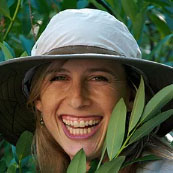
By Maria Fadiman, Ph.D.
What a joy to speak to the audience at the FAU Research in Action talk at the Boca Raton Public Library. The energy in the room was contagious, and that helped bring the talk alive. As people laughed, gasped and peered intently, I knew I was talking to a particularly engaged audience.
The questions and comments that followed the talk helped me think of my work in a more local way, as people identified issues here in Florida, as well as ways they work in the community. These thoughts ranged from protected areas and the Everglades, to home gardens and landscaping.
The group was inquisitive with their questions and helped me look at my own work from new angles, and the role I, as the researcher, play in learning about people and lands far away from me. Overall, the sense of interest and commitment to community and the environment in the room filled us all that day.
back to topback to top